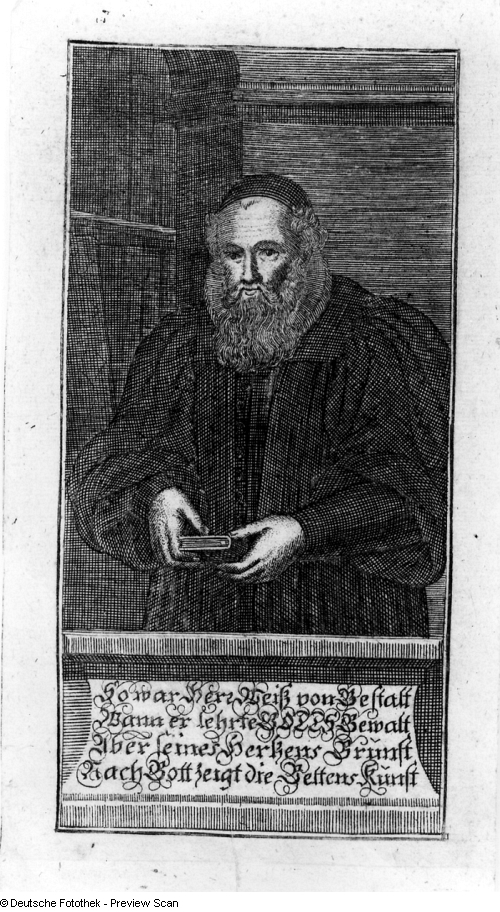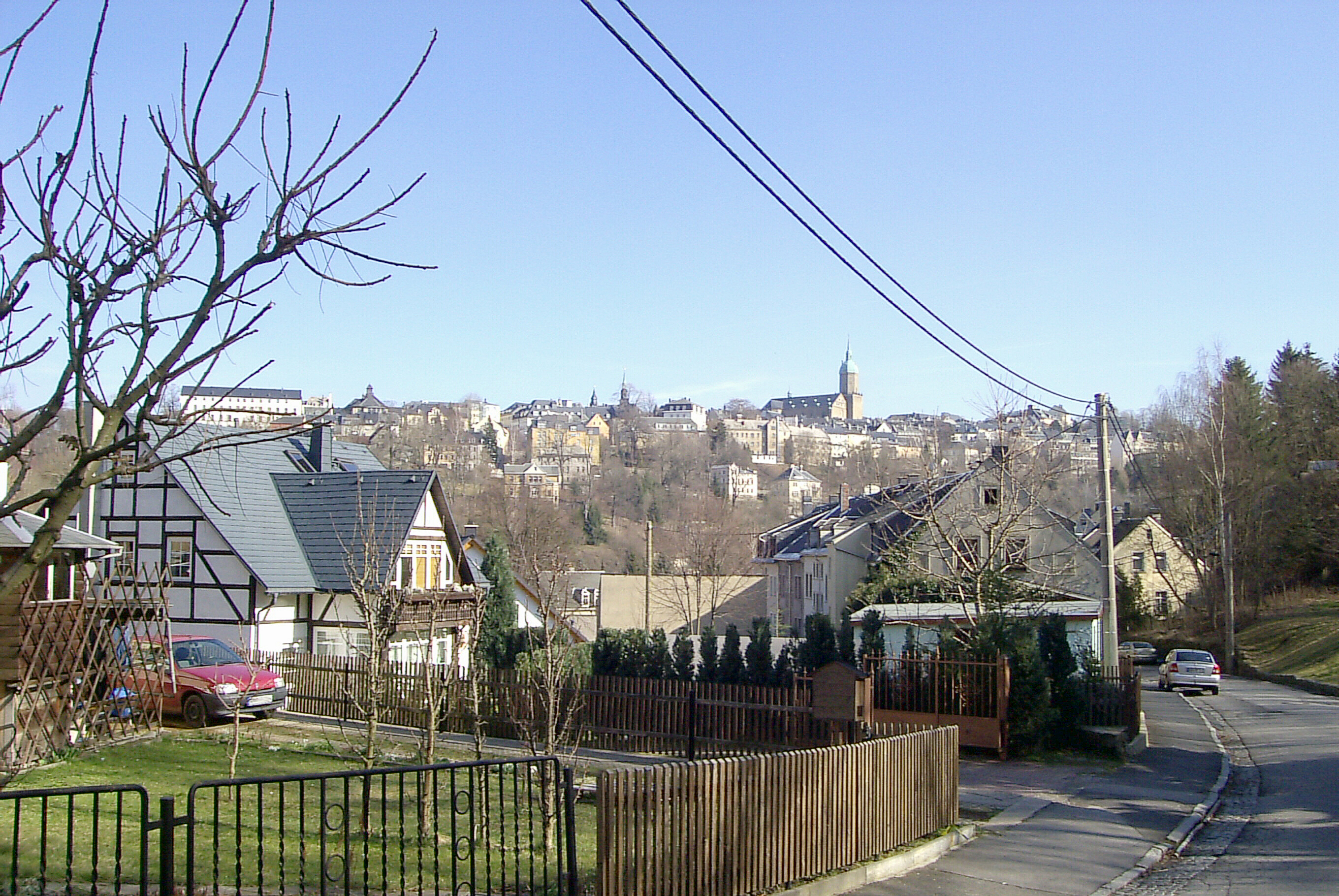|
Petrus Albinus
Petrus Albinus (German name: Peter von Weiße; 1543–1598) was a professor at Wittenberg in Germany and is known as the father of Saxon historiography. Life Petrus Albinus was born on 18 June 1543 in Schneeberg in the Ore Mountains of central Europe. His father was Peter Weis, who built the Hospital Church in Schneeberg. He was married to Magdalena Hübsch, daughter of a ''Ratskämmerer'' and mining entrepreneur, who had moved to Schneeberg from Nuremberg. In keeping with the common practice of the day he Latinized his name to Petrus Albinus. After attending grammar school in Schneeberg and princely school at Meissen, Albinus studied in Leipzig, received his bachelor's degree in 1553 and worked in Lauban. In 1559 he moved to the University of Viadrina in Frankfurt/Oder, and in 1564 the Leucorea in Wittenberg. He focused mainly on legal and historical research. In Wittenberg he took over the task of completing the history of Upper Saxony and the House of Wettin begun ... [...More Info...] [...Related Items...] OR: [Wikipedia] [Google] [Baidu] |
Upper Saxony
{{short description, Historic lands in Central Germany Upper Saxony (german: Obersachsen) was the name given to the majority of the German lands held by the House of Wettin, in what is now called Central Germany (''Mitteldeutschland''). Conceptual history The name derives from the period when, after the fall of Duke Henry the Lion in 1180, the medieval Duchy of Saxony dissolved and the Duchy of Saxe-Wittenberg lands passed to the House of Ascania and later to the Wettins in the Margraviate of Meissen. These dynasties subdued the areas east of the Saale river inhabited by Polabian Slavs, and took the tribal name ''Sachsen'' (Saxons) upstream the Elbe with them. It was particularly to distinguish the lands from 'Lower Saxony', a concept which arose later in popular usage (though never enforced) as a term for the original Saxon lands in north and west Germany (where Low German dialects had spread), in what is now the state of Lower Saxony, as well as the adjacent Westphalian regio ... [...More Info...] [...Related Items...] OR: [Wikipedia] [Google] [Baidu] |
Crimmitschau
Crimmitschau () is a town in the district of Zwickau in Saxony, Germany. Geography Crimmitschau lies on the river Pleiße in the northern foothills of the Erzgebirge. Neighboring municipalities Adjacent communities include: Zwickau, Dennheritz, Neukirchen, Meerane, and Langenbernsdorf in Landkreis of Zwickau; Heyersdorf, Jonaswalde, Ponitz and Thonhausen in Thuringian Landkreis of Altenburger Land; as well as Braunichswalde, Rückersdorf, and Seelingstädt in Thuringia in Landkreis of Greiz. Municipality subdivisions The town Crimmitschau consists of Crimmitschau proper and the following five ''Ortschaften'' (localities), each containing several ''Ortsteile'' or divisions:Hauptsatzung der Großen Kreisstadt Crimmitschau January 2019. * [...More Info...] [...Related Items...] OR: [Wikipedia] [Google] [Baidu] |
Annaberg-Buchholz
Annaberg-Buchholz () is a town in Saxony, Germany. Lying in the Ore Mountains, it is the capital of the district of Erzgebirgskreis. Geography The town is located in the Ore Mountains, at the side of the ''Pöhlberg'' ( above sea level). History The previously heavily forested upper Ore Mountains were settled in the 12th and 13th centuries by Franconian farmers. Frohnau, Geyersdorf, and Kleinrückerswalde—all now part of present-day town—are all attested from 1397. Barbara Uthmann introduced braid- and lace-making in 1561 and it was further developed in the 1590s by Belgian refugees fleeing the policies of Fernando Álvarez de Toledo, 3rd Duke of Alba, Spain's governor over the Low Countries. The industry was further developed in the 19th century, when Annaberg and Buchholz were connected by rail to Chemnitz and each other and both settlements had specialized schools for lace-making. The population of Annaberg in the 1870s was 11,693. This had risen to 16,811 by 1905, ... [...More Info...] [...Related Items...] OR: [Wikipedia] [Google] [Baidu] |
Altzella Abbey
Altzella Abbey, also Altzelle Abbey (german: Kloster Altzella or ''Altzelle'', previously ''Cella'' or ''Cella Sanctae Mariae''), is a former Cistercian monastery near Nossen in Saxony, Germany. The former abbey contains the tombs of the Wettin margraves of Meissen from 1190 to 1381. The premises and gardens, surrounded by the precinct wall of the former monastery, and known as the ''Klosterpark Altzella'', are now maintained by the Schloss Nossen/Kloster Altzella Administration, and consist of a Romantic park, ruins and restored buildings, used for various cultural and religious functions, such as Corpus Christi processions. It also hosts conferences and private functions. History In 1162 Emperor Frederick I acquired 800 ''Hufen'' of cleared land from a monastery founded by Otto II, Margrave of Meissen, some of which was exchanged after the discovery of silver in 1168. In the following years,the foundation year is taken as 1170 - see Janauschek, ''Originum Cisterciensium ... [...More Info...] [...Related Items...] OR: [Wikipedia] [Google] [Baidu] |
Saxony
Saxony (german: Sachsen ; Upper Saxon: ''Saggsn''; hsb, Sakska), officially the Free State of Saxony (german: Freistaat Sachsen, links=no ; Upper Saxon: ''Freischdaad Saggsn''; hsb, Swobodny stat Sakska, links=no), is a landlocked state of Germany, bordering the states of Brandenburg, Saxony-Anhalt, Thuringia, Bavaria, as well as the countries of Poland and the Czech Republic. Its capital is Dresden, and its largest city is Leipzig. Saxony is the tenth largest of Germany's sixteen states, with an area of , and the sixth most populous, with more than 4 million inhabitants. The term Saxony has been in use for more than a millennium. It was used for the medieval Duchy of Saxony, the Electorate of Saxony of the Holy Roman Empire, the Kingdom of Saxony, and twice for a republic. The first Free State of Saxony was established in 1918 as a constituent state of the Weimar Republic. After World War II, it was under Soviet occupation before it became part of the communist East Ger ... [...More Info...] [...Related Items...] OR: [Wikipedia] [Google] [Baidu] |
Christian I Of Saxony
Christian I of Saxony (29 October 1560 in Dresden – 25 September 1591 in Dresden) was Elector of Saxony from 1586 to 1591. He belonged to the Albertine line of the House of Wettin. He was the sixth but second surviving son of Elector Augustus of Saxony and Anna of Denmark. The death of his older brother, Alexander (8 October 1565), made him the new heir apparent to the Electorate of Saxony. Christian succeeded his father when he died, in 1586. His chancellor was Nikolaus Krell. During his reign, the first measurement was made of the Electorate of Saxony by Matthias Oeder. Later, the work of Oeder was continued by Balthasar Zimmermann until 1633 and completed as far as possible. In 1591 his wife organised a set of 12 suits of armour that she planned to give him as a Christmas present. A number of the suits survive. Family In Dresden on 25 April 1582, Christian married Sophie, daughter of John George, Elector of Brandenburg. They had seven children: #Christian II (b. Dre ... [...More Info...] [...Related Items...] OR: [Wikipedia] [Google] [Baidu] |
Prince-Elector
The prince-electors (german: Kurfürst pl. , cz, Kurfiřt, la, Princeps Elector), or electors for short, were the members of the electoral college that elected the emperor of the Holy Roman Empire. From the 13th century onwards, the prince-electors had the privilege of electing the monarch who would be crowned by the pope. After 1508, there were no imperial coronations and the election was sufficient. Charles V (elected in 1519) was the last emperor to be crowned (1530); his successors were elected emperors by the electoral college, each being titled "Elected Emperor of the Romans" (german: erwählter Römischer Kaiser; la, electus Romanorum imperator). The dignity of elector carried great prestige and was considered to be second only to that of king or emperor. The electors held exclusive privileges that were not shared with other princes of the Empire, and they continued to hold their original titles alongside that of elector. The heir apparent to a secular prince-ele ... [...More Info...] [...Related Items...] OR: [Wikipedia] [Google] [Baidu] |
Dresden
Dresden (, ; Upper Saxon: ''Dräsdn''; wen, label=Upper Sorbian, Drježdźany) is the capital city of the German state of Saxony and its second most populous city, after Leipzig. It is the 12th most populous city of Germany, the fourth largest by area (after Berlin, Hamburg and Cologne), and the third most populous city in the area of former East Germany, after Berlin and Leipzig. Dresden's urban area comprises the towns of Freital, Pirna, Radebeul, Meissen, Coswig, Radeberg and Heidenau and has around 790,000 inhabitants. The Dresden metropolitan area has approximately 1.34 million inhabitants. Dresden is the second largest city on the River Elbe after Hamburg. Most of the city's population lives in the Elbe Valley, but a large, albeit very sparsely populated area of the city east of the Elbe lies in the West Lusatian Hill Country and Uplands (the westernmost part of the Sudetes) and thus in Lusatia. Many boroughs west of the Elbe lie in the foreland of the Ore Mounta ... [...More Info...] [...Related Items...] OR: [Wikipedia] [Google] [Baidu] |
Rector (academia)
A rector (Latin for 'ruler') is a senior official in an educational institution, and can refer to an official in either a university or a secondary school. Outside the English-speaking world the rector is often the most senior official in a university, whilst in the United States the most senior official is often referred to as president and in the United Kingdom and Commonwealth of Nations the most senior official is the chancellor, whose office is primarily ceremonial and titular. The term and office of a rector can be referred to as a rectorate. The title is used widely in universities in EuropeEuropean nations where the word ''rector'' or a cognate thereof (''rektor'', ''recteur'', etc.) is used in referring to university administrators include Albania, Austria, the Benelux, Bosnia and Herzegovina, Bulgaria, Croatia, Cyprus, Czech Republic, Denmark, Estonia, Finland, Germany, Greece, Hungary, Iceland, Italy, Latvia, Malta, Moldova, North Macedonia, Poland, Portugal, Romani ... [...More Info...] [...Related Items...] OR: [Wikipedia] [Google] [Baidu] |
University Of Wittenberg
Martin Luther University of Halle-Wittenberg (german: Martin-Luther-Universität Halle-Wittenberg), also referred to as MLU, is a public, research-oriented university in the cities of Halle and Wittenberg and the largest and oldest university in the German state of Saxony-Anhalt. MLU offers German and international (English) courses leading to academic degrees such as BA, BSc, MA, MSc, doctoral degrees, and Habilitation. The university was created in 1817 through the merger of the University of Wittenberg (founded in 1502) and the University of Halle (founded in 1694). MLU is named after Protestant reformer Martin Luther, who was a professor in Wittenberg. Today, the university campus is located in Halle, while ''Leucorea Foundation'' in Wittenberg serves as MLU's convention centre. Both Halle and Wittenberg are about one hour from Berlin via the Berlin–Halle railway, which offers Intercity-Express (ICE) trains. History University of Wittenberg (''Universität Wittenbe ... [...More Info...] [...Related Items...] OR: [Wikipedia] [Google] [Baidu] |
Dean (education)
Dean is a title employed in academic administrations such as colleges or universities for a person with significant authority over a specific academic unit, over a specific area of concern, or both. In the United States and Canada, deans are usually the head of each constituent college and school that make up a university. Deans are common in private preparatory schools, and occasionally found in middle schools and high schools as well. Origin A "dean" (Latin: ''decanus'') was originally the head of a group of ten soldiers or monks. Eventually an ecclesiastical dean became the head of a group of canons or other religious groups. When the universities grew out of the cathedral schools and monastic schools, the title of dean was used for officials with various administrative duties. Use Bulgaria and Romania In Bulgarian and Romanian universities, a dean is the head of a faculty, which may include several academic departments. Every faculty unit of university or academy. The ... [...More Info...] [...Related Items...] OR: [Wikipedia] [Google] [Baidu] |









